Research
We develop new methods and algorithms for electronic structure theory. Click the links below to find out more!
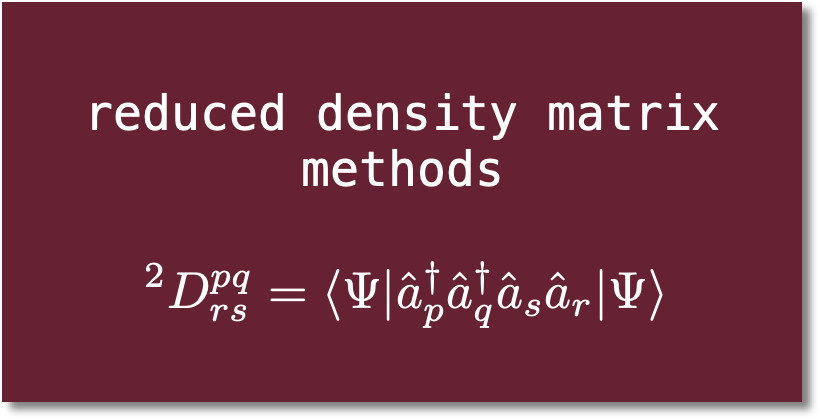
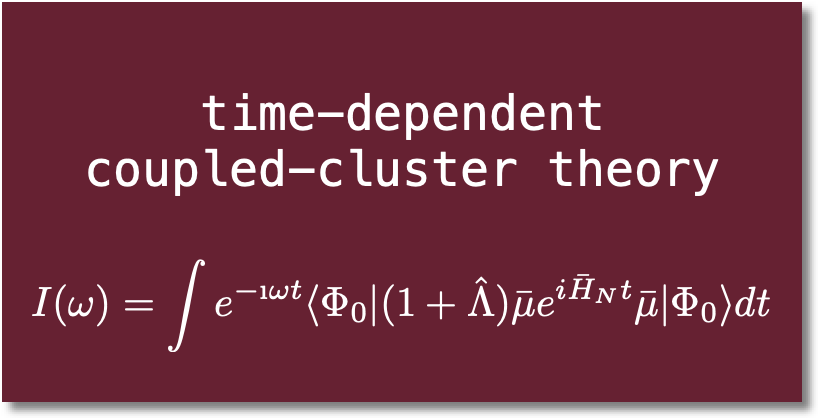
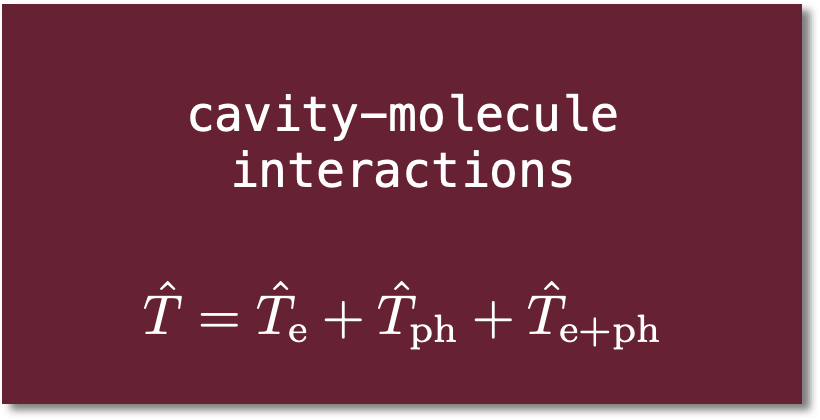
Cavity-molecule interactions
Strong coupling of photonic and molecular degrees of freedom can lead to the formation of hybrid light-matter states known as polaritons that can exhibit significantly different properties relative to the original uncoupled states. For example, as the animation below shows, the optical properties of a molecule can be dramatically alterered via sufficiently strong coupling to a cavity. In this case, an absorption feature in formaldehyde (described by a cavity quantum electrodynamics [QED] generalization of equation-of-motion [EOM] coupled-cluster [CC] theory and a minimal basis) splits into a lower and upper polariton state, separated by what is called the Rabi splitting, which, in this case, can exceed 1 eV.
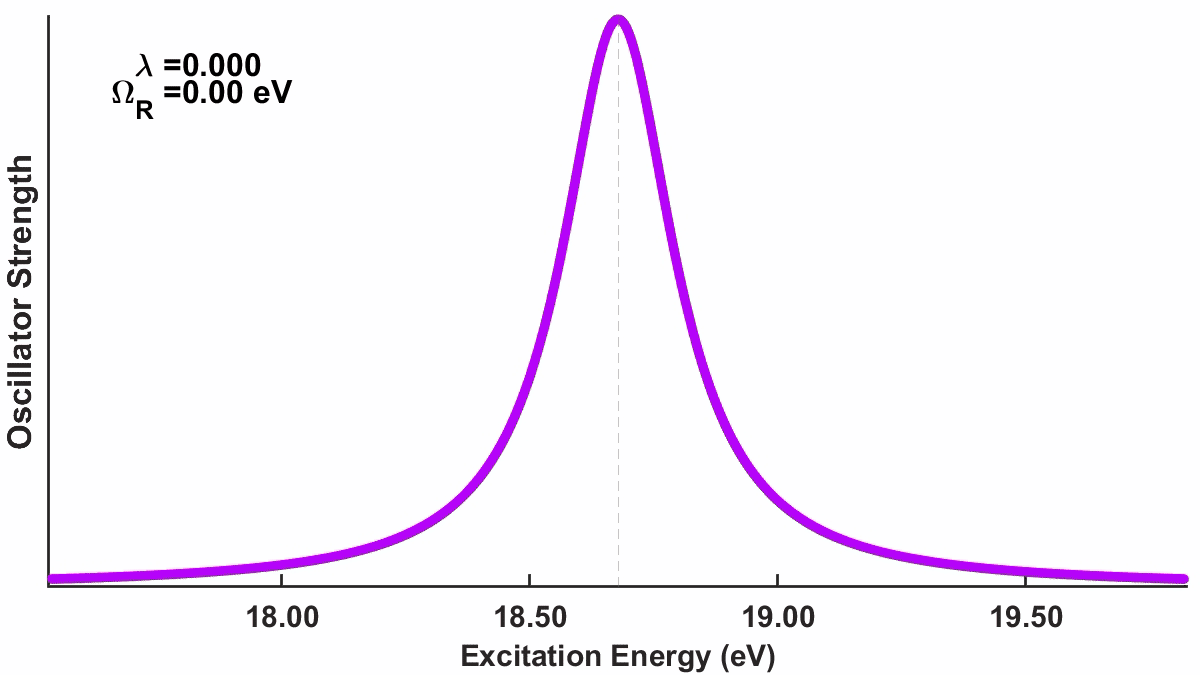
We have developed algorithms for mean field (Hartree-Fock, density functional theory) and correlated (CC, EOM-CC, variational two-electron reduced density matrix theory [v2RDM]) ab initio cavity QED calculations in our package hilbert, which is a plugin to the Psi4 electronic structure package. You can read about the theory and application of QED-CC, EOM-QED-CC, and QED-v2RDM here:
- M. D. Liebenthal, N. Vu, A. E. DePrince III, submitted (2023).
Mean-field cavity effects in quantum electrodynamics density functional and coupled-cluster theories
- N. Vu, G. M. McLeod, K. Hanson, and A. E. DePrince III, J. Phys. Chem. A 126, 9303-9312 (2022).
Enhanced diastereocontrol via strong light-matter interactions in an optical cavity
- J. D. Mallory and A. E. DePrince III, Phys. Rev. A, 106, 053710 (2022).
Reduced-density-matrix-based ab initio cavity quantum electrodynamics
- M. D. Liebenthal, N. Vu, and A. E. DePrince III, J. Chem. Phys. 156, 054105 (2022).
Equation-of-motion cavity quantum electrodynamics coupled-cluster theory for electron attachment - A. E. DePrince III, J. Chem. Phys. 154, 094112 (2021).
Cavity-modulated ionization pot entials and electron affinities from quantum electrodynamics coupled-cluster theory
To learn more about ab initio approaches to the description of quantized light-matter interactions, check out the seminar below. The discussion of cavities begins at 26:20.
Plasmon-molecule interactions
We have developed a quantum-mechanical mean-field method to describe plasmon-molecule interactions in the time domain. As a silly proof of principle, consider the interaction of H2 with a hypothetical plasmonic particle whose resonance overlaps with the Σg+ to Σu+ excitation in H2. The interference between the plasmon and molecular excitations gives rise to a Fano-like resonance whose character depends strongly on the alignment of external electric fields and the molecular axis of H2.
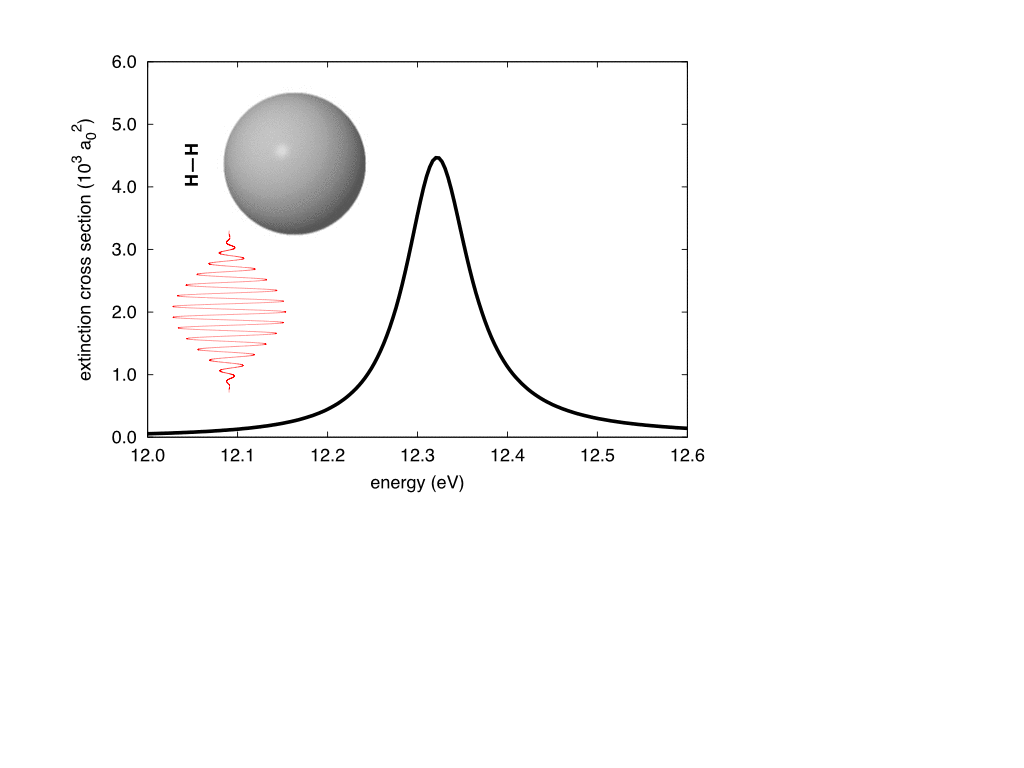
- D. R. Nascimento and A. E. DePrince, III, J. Chem. Phys. 143, 214104 (2015).
Modeling plasmon-molec ule interactions using quantized radiation fields within time-dependent electronic structure theory






